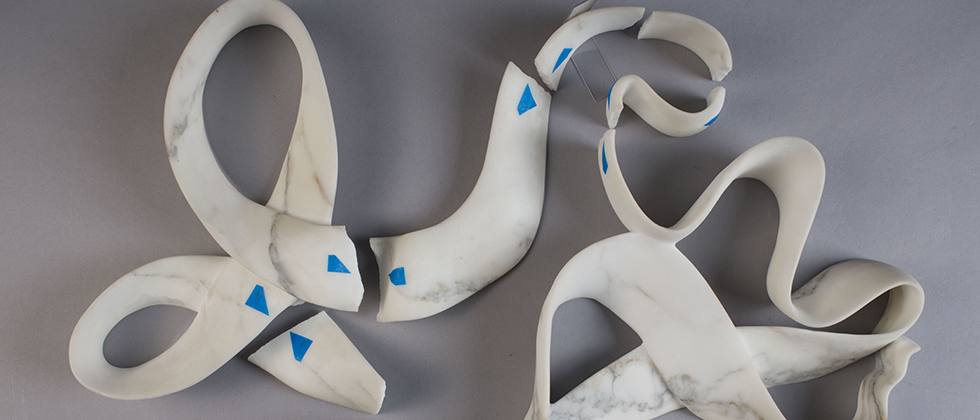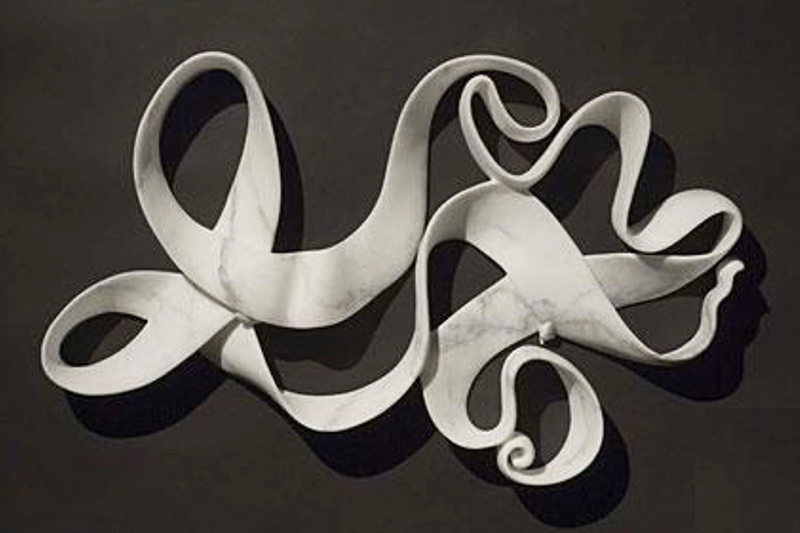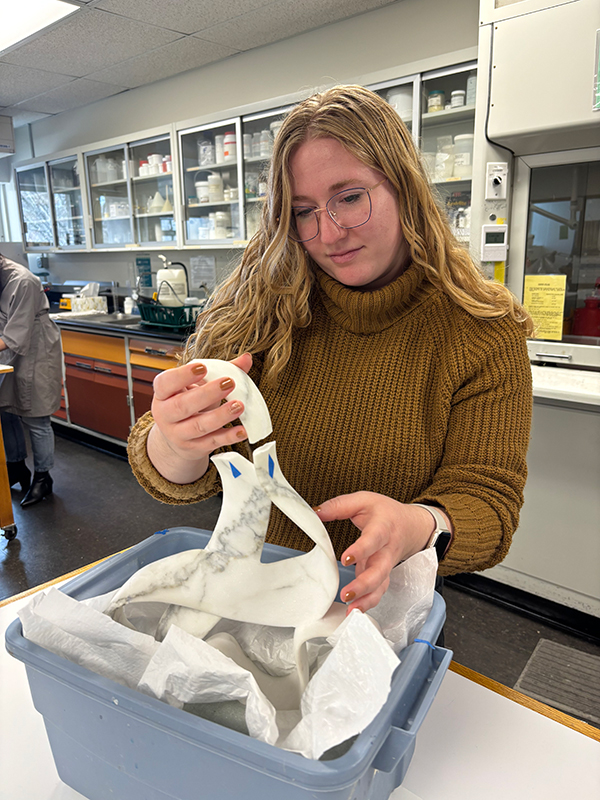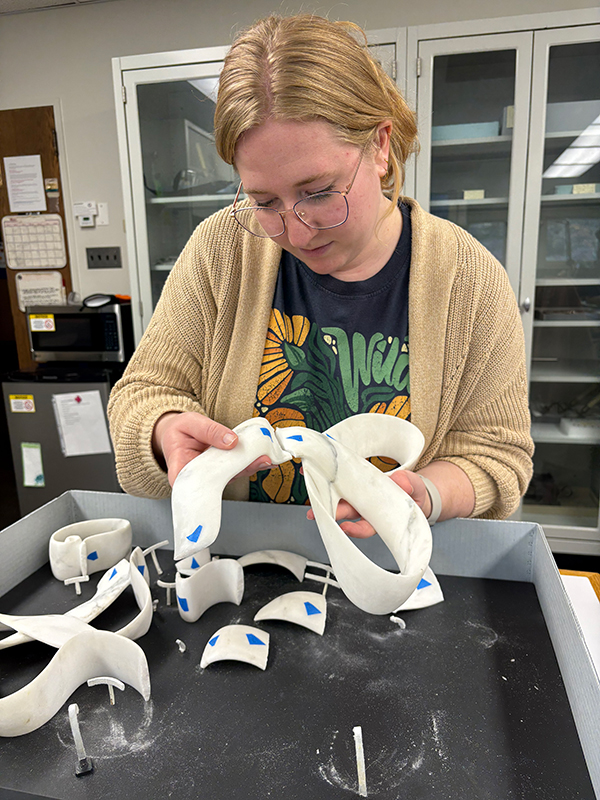
Category: Graduate Students

Art conservation and fragile connections
November 21, 2025 Written by Lisa Chambers | Images courtesy of Sarah Lavin, Elizabeth Turk, and Emma Reuther
Art conservation graduate student to reconstruct fractured sculpture by contemporary artist Elizabeth Turk
Sarah Lavin has had a few good breaks. An objects major in the Winterthur/University of Delaware Program in Art Conservation (WUDPAC), she’s built her path through conservation on both intellectual and physical reconnections.
Now, she’s working on a piece that’s been broken several times—Ribbon #8, a fractured marble sculpture by contemporary artist Elizabeth Turk—which she plans to clean and reconstruct, while also learning more about the ties modern artists maintain to their works, even as those works change hands over time.
As an undergraduate in chemistry and art history at Case Western Reserve University, and while earning her master’s in art history, “a lot of my research was about breaking apart the Eurocentric model of early modern art history,” said Sarah. Some of that had to do with “how they transport works from different areas and how many different makers might have a hand in a single object.”

The curling Ribbon #8, created from Carrara marble, was made in 2008 for an exhibition in New York City at Hirschl & Adler Modern. It was later purchased by the U.S. State Department and put on display at the embassy in Baghdad.
During its time overseas, the sculpture suffered multiple breaks—first while on view, then again during multiple transits. “The material is so thin and fragile,” Sarah said. “It’s now in so many pieces, the artist said she doesn’t really feel like it’s her artwork anymore.” Turk gave permission for the State Department to donate the piece to WUDPAC’s study collection.

Sarah requested to work on stone and was especially interested in the unique questions surrounding contemporary artworks: “I love thinking about the ethical and philosophical considerations of how to handle an artwork when the artist is still living.”
For this piece, she said, “My plan is to rejoin the pieces and do a little bit of surface cleaning.” She is drawing on conservation research from The Metropolitan Museum of Art, including a study on a shattered Renaissance sculpture by Tullio Lombardo. “The conservators there identified a very specific blend of adhesives that are strong enough to hold a structural join without the use of pins.”
Joining the fragile fragments will be a careful, multi-step process. “The tricky part will be aligning the joins, and how to set them up with various clamping systems and supports,” Sarah said.
“Probably I’ll work in a sandbox,” she added, describing a box of covered silica that will allow her to set the piece down at various angles. “I want to get gravity on my side and see what I can do.”
When she’s done, Ribbon #8 will remain in the lab—so that future students, too, can see what she could do.


